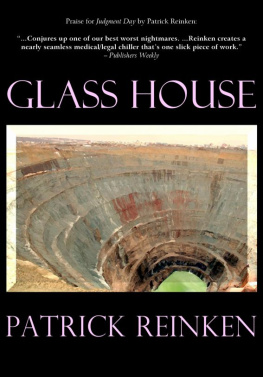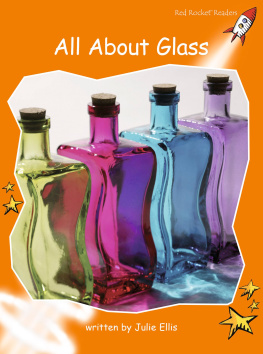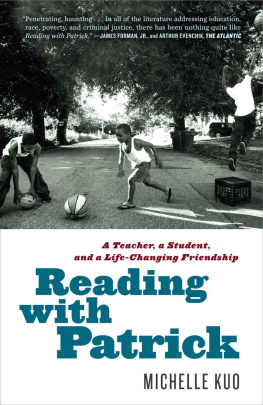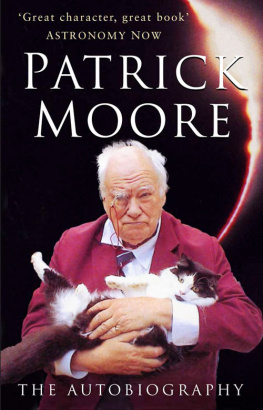Patrick Reinken - Glass House
Here you can read online Patrick Reinken - Glass House full text of the book (entire story) in english for free. Download pdf and epub, get meaning, cover and reviews about this ebook. year: 2011, genre: Detective and thriller. Description of the work, (preface) as well as reviews are available. Best literature library LitArk.com created for fans of good reading and offers a wide selection of genres:
Romance novel
Science fiction
Adventure
Detective
Science
History
Home and family
Prose
Art
Politics
Computer
Non-fiction
Religion
Business
Children
Humor
Choose a favorite category and find really read worthwhile books. Enjoy immersion in the world of imagination, feel the emotions of the characters or learn something new for yourself, make an fascinating discovery.
- Book:Glass House
- Author:
- Genre:
- Year:2011
- Rating:5 / 5
- Favourites:Add to favourites
- Your mark:
- 100
- 1
- 2
- 3
- 4
- 5
Glass House: summary, description and annotation
We offer to read an annotation, description, summary or preface (depends on what the author of the book "Glass House" wrote himself). If you haven't found the necessary information about the book — write in the comments, we will try to find it.
Glass House — read online for free the complete book (whole text) full work
Below is the text of the book, divided by pages. System saving the place of the last page read, allows you to conveniently read the book "Glass House" online for free, without having to search again every time where you left off. Put a bookmark, and you can go to the page where you finished reading at any time.
Font size:
Interval:
Bookmark:
Patrick Reinken
Copyright 2011 Patrick Reinken
Smashwords Edition
This book is a work of fiction. Names, characters,places, and incidents either are products of the authorsimagination or are used fictitiously. Any resemblance to actualevents or locales or persons, living or dead, is entirelycoincidental.
Copyright 2011 by Patrick Reinken (Smashwordsedition)
All rights reserved, including the right ofreproduction in whole or in part in any form.
Cover design by Patrick Reinken.
Cover photograph of the Mir diamond mine by VladimirArtukhov. Cover photograph is licensed under and used pursuant tothe Creative Commons Attribution 3.0 Unported (CC BY 3.0) license.At the time of use, the human-readable summary of the full legallicense could be found athttp://creativecommons.org/licenses/by/3.0/deed.en; the full legallicense, including disclaimers of warranties, could be found athttp://creativecommons.org/licenses/by/3.0/legalcode. The image wasoriginally posted at Picasa Web Albums(http://picasaweb.google.com/knave2000/XpCCB#5257662700913048066)and was reviewed there on July 21, 2011, by Patrick Reinken, whoconfirmed that it was available under the above license on thatdate. As of the same date, the image additionally was posted onWikimedia Commons, with identification and description of the samelicense(http://commons.wikimedia.org/wiki/File:The_Mir_mine_in_Yakutia.JPG).Use of the photograph does not and is not intended to implicitly orexplicitly assert or imply any connection with, sponsorship of, orendorsement by the Original Author and Licensor.
The original work has been modified.
Smashwords Edition, License Notes
This ebook is licensed for your personal enjoymentonly. This ebook may not be re-sold or given away to other people.If you would like to share this book with another person, pleasepurchase an additional copy for each recipient. If youre readingthis book and did not purchase it, or it was not purchased for youruse only, then please return to Smashwords.com and purchase yourown copy. Thank you for respecting the hard work of thisauthor.
You could smell the ocean. To thesouth past Vredendal and Lamberts Bay and Saldanha the gray-blue waters were mixing. The cold Benguela Current on thecontinents west and the Agulhas on its east churned together atthe spot the Portuguese first called the Cabo das Tormentas,the Cape of Storms, and the salt of the seas was being beaten outinto the winds in the process. This near to the Cape the sharp tangof the salt and the softer, mossy smell of the ocean blew up intothe desert and savannahs on the same trade winds that blew theBenguela north.
Anthony Dikemb had known the smells of thisplace for most of his thirty-six years. There were days when theywere lighter, more of a hint. And there were days when they wereheavier, with a presence that could fill him. But they were alwaysthere. Even far up and onto the karoo plateaus where he was,he could catch the smells of the ocean in the air.
Anthony breathed deeply. The surf was twomiles to the west and hundreds of feet down in elevation, but thesea was strong that evening. He could almost taste it. His eyesdrifted past the heights of the sorting rooms, conveyors andcrushers, and the mines other facilities and machinery. Hesquinted and stared beyond the lights that decorated the buildingscorners and tops, trying to search out some glimmer against theexpanse of water in the distance, as if to prove the water wasthere.
He couldnt find it. Fog on the coast wascommon, and a heavy bank was drifting in and hiding any reflectedlight from the just-vanished sun.
Anthony breathed in again, smiling faintlybefore returning to the papers on the clipboard in his hand. He wasa supervisor at Laurentian Mines, overseeing operations on themiddle shift that ran from eleven in the morning to seven at night,and he was reading over the recovery reports and making checkmarksbased on staffing points that were sent in a memo the previousday.
Laurentians management wanted to add threedozen miners across all crews, but they wanted ten others cutbefore they did. Anthonys extra notations were on workerperformance a simple mark next to someones name likelymeant that man would be dropped from the shift and replaced.
He scanned the numbers and names again,adding an extra check next to a worker listed at the bottom, thensigned a scrawl on a line at the end of the page. He clipped thepen to the top of the board and moved to a pickup truck that wasidling nearby.
The truck was headed off site, andapproaches by workers were typically forbidden, but Anthonysmovements brought no reaction. His position entitled him after all.As shift chief, the sign-off and pass of the log to theadministrative rep were part of the routine.
As expected, the driver wasnt there. Asalways, Anthony had timed it that way.
He reached into the trucks open window anddropped the clipboard and log onto the drivers seat. Before hisarm came back out, he shot it straight, his wrist snapping againstthe shirts cuff.
The diamond more specifically a pieceof diamond rough jumped into his hand.
The stone was a little over a half inchacross, its shape a rough octahedron, an eight-sided figure withirregular triangle faces. The sides of the stone stepped across oneface like stairs, and its surface was coarse and smooth at the sametime, unfinished but surprisingly soft to the touch.
On the outside, a layer of sandy soildirtied portions of it. But the cleaner areas allowed a glimpse ofwhat was inside. There, visible under the coating of caked-ongrime, the diamond seemed little more than a sizable piece ofoff-color, maybe smoked-out glass. But a perception like that wasnave. Uninformed. Misleading, even.
It wouldnt look like anything to a casualobserver. A thousand people could pass by and not notice diamondrough sitting on the ground, and if they saw it, they might thinkit no more than a chunk from a broken soda bottle. For someone whoknew, though for someone with a different eye altogether, atrained eye a glimpse would confirm that the stone wasntglass, and it wasnt simply a stone. Or even simply a diamond.
In actuality it was quite something,indeed.
The rough diamond that Anthony held was alittle large for stealing, but in the end it had been too hard forhim to resist. Because it was pink.
Even in the low light of the evening,Dikemb knew the rough was at least a good, solid pink. The colorwas uniform and deep, maybe as high as intense. It seemed to extendthroughout the piece.
There was no guarantee of that, of course.The stones depth of color wouldnt be known fully until a wash,cut, and polish were completed, and the color could be lost at anystage in that process. Particularly in the cut. A cutter cleavingfancy rough might make a cut in a vivid pink or green or bluediamond, the richest of colors, then pull away and find in horrorthat the color had gone faint. Or had changed in shadealtogether.
Fancy colors in diamonds are products ofimpurities and contamination at an atomic level, and they changewith every shift in the light that hits them. The wrong cut incolored rough, and a $250,000 stone might drop to $25,000 in theblink of an eye. But Anthony hadnt even needed a window into thestone to tell this one would cut well, to at least that good andsolid pink.
That assumed anyone would get the chance towork on it, though. And someone working on it was hardly acertainty, because the good and solid pink was also a unique pink,destined for a unique purpose.
In diamond mines, workers dont get contactwith the mined ore itself. Security concerns and automation havetogether achieved a separation between the actual stones and handsthat might be inclined to steal them. Anthonys position broughthim access, however, and hed used that access when the opportunityarose.
Font size:
Interval:
Bookmark:
Similar books «Glass House»
Look at similar books to Glass House. We have selected literature similar in name and meaning in the hope of providing readers with more options to find new, interesting, not yet read works.
Discussion, reviews of the book Glass House and just readers' own opinions. Leave your comments, write what you think about the work, its meaning or the main characters. Specify what exactly you liked and what you didn't like, and why you think so.










